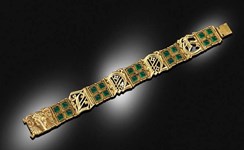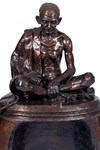Peter and I worked together on cycle and cycling memorabila sales for Bonhams 15 years ago. His position regarding the history of the term ‘penny farthing’ is correct in every way. The response regarding serious cyclists in c.1900 using the term is accurate too.
Obsolescent superseded
In the technologically determinist world of the 19th century, there was little nostalgia for the obsolescent. Many cyclists who had learned to ride the high bicycle were among the first to demean it once they had adopted the rear-driven safety.
Those of the previous generation had done the same with the velocipede bicycle, terming it the ‘boneshaker’ as soon as they had adopted the lighter and more responsive high bicycle in the early 1870s.
There was a good reason for this: obsolete bicycles then became cheap and available to the lower classes. As a result, middle and upper-class cyclists (the majority in the 19th century) were quick to differentiate their activities from those of ‘arry . Articles appeared in Cycling and other publications entitled ‘Where ‘arry buys his crocks’ and suchlike.
As cyclists were often pioneering motorists, they took their arrogance and indeed the term ‘crock’ (also mentioned by Peter) with them into that type of transport too.
Anyone wanting a taste of the place of ‘arry in the world of bourgeois cycling can do little better than reading of the hapless Hoopdriver in HG Wells’ The Wheels of Chance (1896). As an academic, the terms ‘boneshaker’, ‘penny farthing’ and ‘old crock’ are far more problematic than ‘grandfather clock’, which is a pet name even if it is despised by antique clock dealers.
Instead, they were active tools of class differentiation and status. In today’s context of concerns regarding ethical language, they have no more place than those that do the same with race and creed and the sooner they are treated with the same level of contempt, the better for all.
No kidding
By the way, I had reason to talk to Hilary Kay the other week, who explained that ‘white gloves’ were actually kid gloves, and were indeed the reward for a total sale in the Sotheby’s of the 19th and early 20th centuries, although she said she never was given a pair… born too late, presumably.
Like penny farthing, the term looks to me to belong in the dustbin of history, but in this case merely because it seems meaningless. I suggest that we all move to the definition of white cotton gloves, rather than the now largely forgotten customs of a single saleroom a century or more ago.
Nicholas Oddy
Head of design history and theory
Glasgow School of Art
ATG note: many thanks to our recent letter writers for all your entertaining views on both penny farthings and white gloves. We will draw these subjects to a close on the letters page for now.












